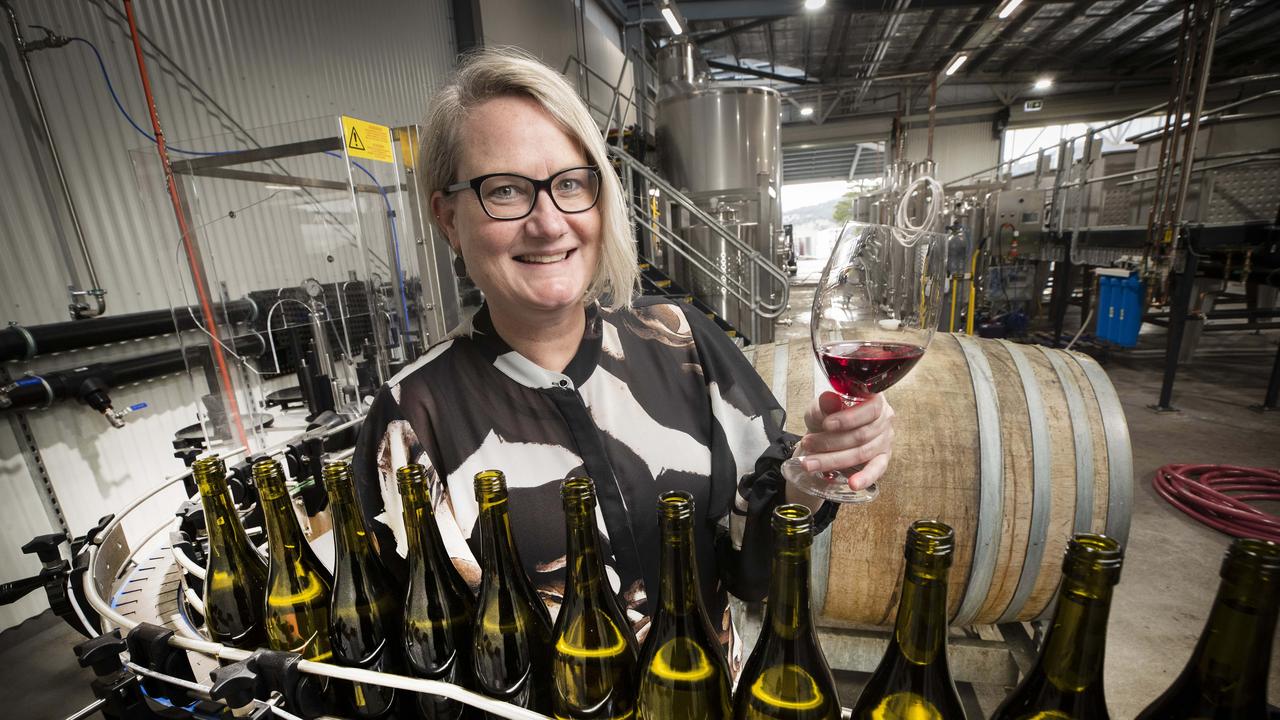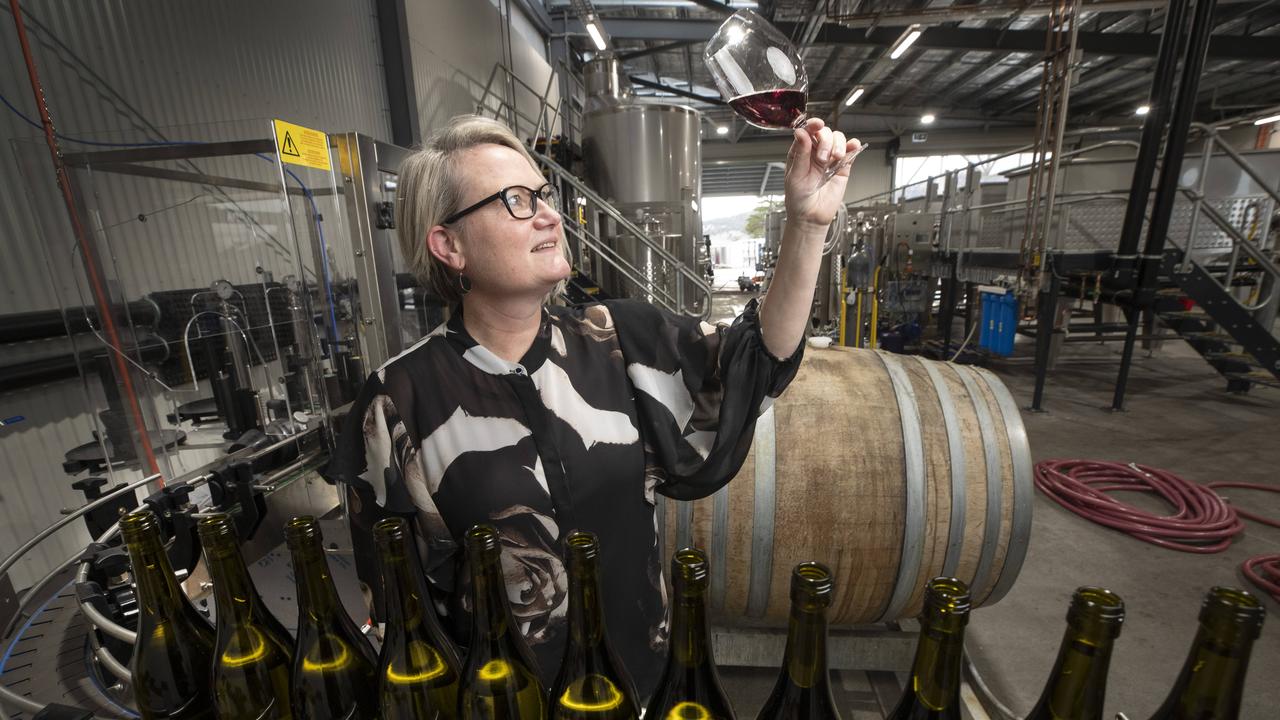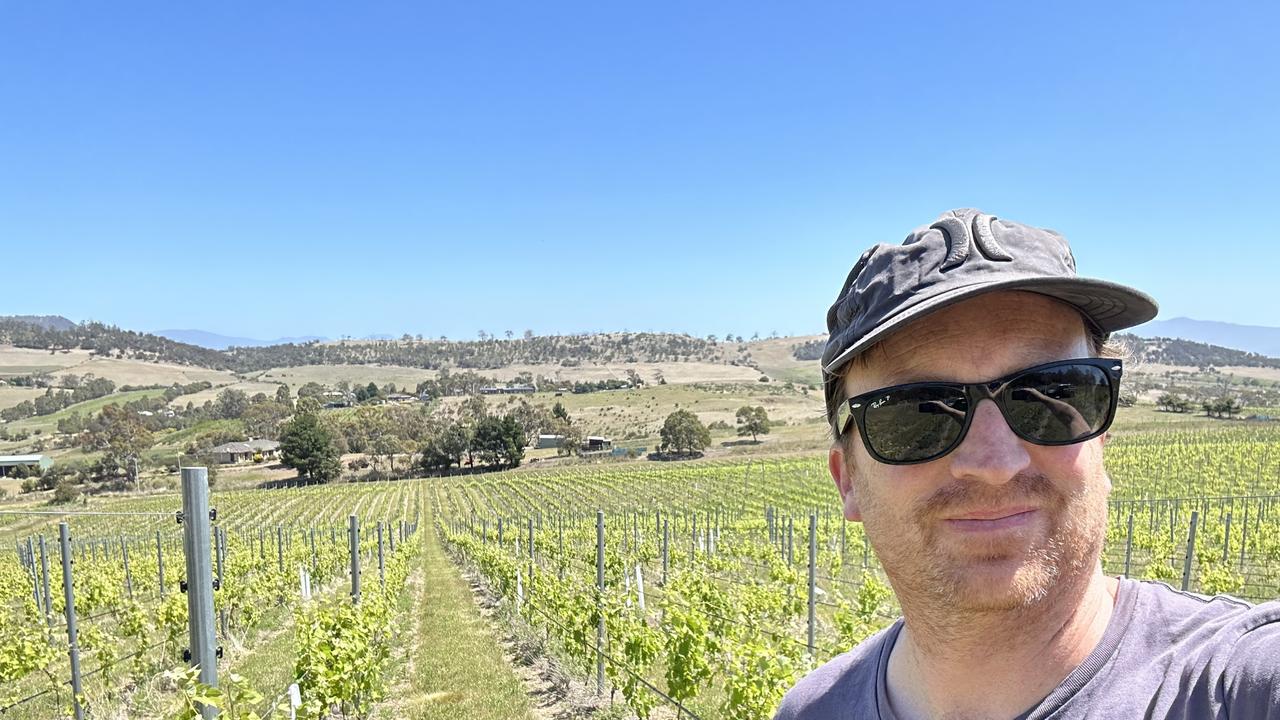Tasmanian wine industry nipping growing pains in the bud
By any measure, the Tasmanian wine industry is in rude health, dominating wine lists at Australia’s top restaurants. But there’s fears it could be at risk.

Tasmania
Don't miss out on the headlines from Tasmania. Followed categories will be added to My News.
By any measure, the Tasmanian wine industry is in rude health.
The island’s cool-climate varieties dominate wine lists at Australia’s top restaurants, while each year increasing numbers of international tourists come knocking on Tasmanian cellar doors.
Tasmania’s grape-growing workforce bucked national trends to make significant gains over the last decade, while industry insiders say career prospects for female participants have never been brighter.
But change is in the air, with an explosion in new vineyard plantings across the state prompting fears that unchecked growth could put Tasmanian wine’s hard-won reputation for quality and uniqueness at serious risk.

Quick growing industry
A recent report commissioned by Wine Tasmania revealed that, at current rates of growth, Tasmania could expect to have 8400 hectares under vine by 2040, compared to the 2400 hectares of total vineyard area today.
Wine Tasmania chief executive Sheralee Davies told the Mercury that although the industry faced unstoppable change over the next 15 years, a well-managed transition which prioritised market development, tourism, and premium standards, could help turn viticulture into an economic powerhouse worth up to $2 billion per annum.
“Since the 1990s, Tasmania’s growth in vineyard area has been about 5.5 per cent each year, but over the last eight years it has jumped up to more like 10 to 14 per cent,” Ms Davies told the Mercury.
“Growth is happening whether we want it or not, so we need to be so focused on making sure this growth is sustainable and successful.”
Pressed to meet demand
Award-winning winemaker Nick Glaetzer already had deep family roots in the South Australian scene when he and fiancée Sally Dixon were drawn to the potential of Tasmania’s cool, dry climate in 2005.
Initially employed at Frogmore Creek, Mr Glaetzer founded Glaetzer-Dixon Wines with his now-wife, with the couple eventually establishing an urban winemaking operation in the old Eski ice factory on the Brooker Hwy in Hobart.

Mr Glaetzer said he never intended to plant his own vineyard, instead being happy to follow his father’s business model of paying a premium to growers in return for control over vine and harvest management.
But after determining their business could only achieve growth with a vineyard of its own, the Glaetzers poured more than $2 million into establishing 12 hectares of pinot noir, riesling, and shiraz vines at Tea Tree, employing 40 people during the construction and planting process.
“It’s not an investment we were necessarily ready to make, but our hands were tied,” Mr Glaetzer said.
“We’re seeing huge demand for super-premium, single-vineyard wines, and having our own planting allows us to create unique wines of the quality and complexity that wine lovers are seeking.
“The really pertinent issue for the Tassie wine industry at the moment is how we take advantage of the growing national and international demand for our wines.”
Hinging future growth on demand
Karen and James Stewart are the new kids on the Tasmanian wine block, having purchased a dusty old sheep farm outside Richmond in 2018 with dreams to build a family-run vineyard and winery from the ground up.
The teacher and lawyer, who returned home from busy mainland careers to raise their young children, drew on the expertise and guidance of Spring Vale vineyard’s Lyne family to carve out 11 hectares of irrigated vines around the ancient gums of the property they named Caledon.

After building their family home on-site and then a cellar door operation due to open later this year, the Stewarts are conscious that any future scale-up of their vineyard should be based on consumer demand.
“We have areas marked on the farm for expansion, but this will only come after we have established the cellar door business, and we can see what our customers are wanting,” Mr Stewart said.
“Tasmania’s brand is premium, unique, bespoke, and authentic, and our wine industry needs to reflect this.
“We need to be very careful that increases in the state’s production are done in a way that is consistent with our brand and not destructive of it.”
Reputation opens opportunity for established producer
Established North-East wine producer Jansz Tasmania is another industry player increasing its vineyard footprint in the state, with 30 hectares of chardonnay and pinot noir to be planted at Orielton this spring.

Jansz Tasmania vigneron, Jen Doyle, said she was confident that the unique nature of Tasmanian wine – and the collaborative nature of the state’s viticultural community – would continue protecting the industry’s reputation for quality into the future.
“The character and style that we are able to achieve in our sparklings, aromatic whites, and pinot noirs cannot be replicated anywhere else in the world,” Ms Doyle said.
“The Tasmanian wine industry is a tight-knit community and its support of one and other, along with skills sharing and marketing cohesion, act not only to maintain the current quality of premium wine production but, as it matures, to strive for even greater recognition with flagship wines from this state.”
Roadmap to ensure quality
Ms Davies said the industry’s roadmap for navigating the current era of vineyard expansion was straightforward – maintaining premium standards, supporting high-yielding wine tourism, and making a concerted push into new export markets.
“If we were to do nothing, and just watch the vineyard area in Tasmania grow at the rate it has been, I can almost guarantee that in 10 years we will be saying ‘What the heck did we let happen, we forgot to make sure that there was a market’,” she said.
“The work Wine Tasmania is doing is not about promoting growth.
“It’s about recognising that growth is happening regardless, and managing the risks.”
Originally published as Tasmanian wine industry nipping growing pains in the bud








